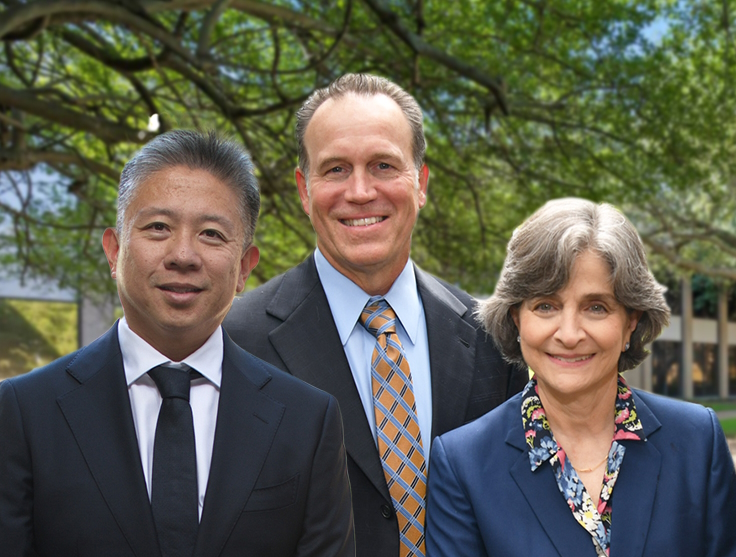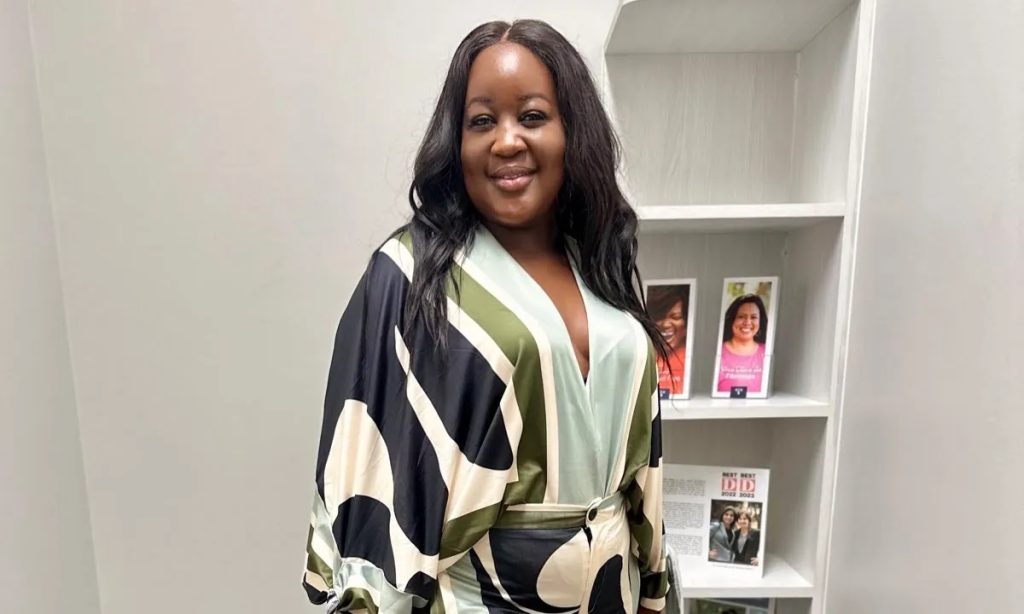Nereah* admits that at one point, she almost forgot how life felt to be normal. One minute, it was lower back spasms and heavy menstrual bleeding. And the next minute, there were several other symptoms that ranged from uncomfortable to debilitating—so much so that on one day, she found herself in the emergency room. The medical staff told her she was dangerously anemic and gave her an IV drip followed by a blood transfusion. Sadly, a battery of tests came back normal. After the ER, she saw a gynecologist who diagnosed her with fibroids and suggested a hysterectomy. But the caring and thorough OBGYN also referred her to a dedicated fibroid doctor, a physician at the Fibroid Institute who specializes in fibroids, to review all her options.
Nereah’s Fibroid Symptoms
- Excessive period bleeding
- Intense pain and cramping during periods
- Lower back spasms
- Headaches
- Anemia
- Extended abdominal area
Is There a Link Between Fibroids and Anemia?
Two common symptoms women with fibroids experience are abnormally long periods and heavy bleeding. For many, this can lead to excessive blood loss and, eventually, anemia. This condition is defined as a low number of red blood cells. These red blood cells store and carry oxygen in the blood. For patients with fewer red blood cells than normal, their tissues and organs, such as the heart and lungs, do not get as much oxygen as usual. Different kinds of fibroids cause more bleeding than others, which can eventually lead to multi-organ failure if not treated.
Anemia is the most common blood disorder in the world and affects approximately 1.62 billion people globally. The group affected the most is non-pregnant women (468.4 million). It is diagnosed when a blood test shows a hemoglobin value of less than 13.5 GM/dl in a man or less than 12/0 gm/dl in a woman. While poor diet, intestinal disorders, and chronic diseases are typically the cause, other conditions, such as fibroids, lead to excessive blood loss. Many women with fibroids (such as Nereah) don’t realize they are anemic at first, but there are telltale symptoms:
- Excessive fatigue and loss of energy
- Dizziness
- Unusually rapid heartbeat
- Shortness of breath
- Cold hands and feet
- Pale or yellow skin
- Chest pain
- Headaches
Fibroids and Anemia: How To Treat Both
If you’ve been diagnosed with fibroids, it is important that you and your doctor keep a watchful eye on the onset of anemia. Even if immediate fibroid treatment isn’t necessary, knowing the symptoms of anemia, doing blood workup for anemia, and communicating with your fibroid doctor about how you feel can help avoid more problems.
Nereah is like many of the patients we see in that she was seeking non-surgical methods from a fibroid specialist. She wanted to avoid incisions and hospital stays, among other issues. “I told her that was too drastic for me,” Nereah explains about the initial conversation with her gynecologist. Thankfully, there are a variety of options to avoid surgery.
- Medications — These can help with some of your symptoms but won’t get rid of your fibroids.
- Uterine Fibroid Embolization (UFE) — A minimally invasive procedure that cuts off blood flow to all fibroids, causing them to shrink. UFE is provided by a specialized fibroid doctor, known as an interventional radiologist. It is low risk, doesn’t require incisions, and is faster than some of the other alternatives.
- Acessa — A small probe is placed into a fibroid and heated up to destroy it. If you have multiple large fibroids or fibroids that are hard to get to, Acessa is not a good choice. It is also not covered by some insurance companies.
- Endometrial Ablation — This technique removes the inside lining of the uterus to reduce heavy bleeding. However, it is not a good option if you want to get pregnant in the future. It also won’t shrink fibroids or treat fibroids outside the interior uterine lining.
- Sonata System — Using an intrauterine ultrasound device, radiofrequency energy shrinks the fibroid. Studies show Sonata works with non-pedunculated submucosal fibroids and fibroids larger than 5.0 cm may require the application of multiple ablations.
How Is UFE by a Fibroid Doctor Different?

Nereah realized quickly after speaking with the team at Fibroid Institute in Dallas that uterine fibroid embolization (UFE) was the best option for her. For starters, it can treat uterine fibroids with multiple locations and sizes. And rather than remove fibroids, UFE relies on X-ray guidance to narrow in on the vessels that supply blood to the fibroids. A fibroid doctor injects tiny particles through a small catheter into the vessels, blocking the blood flow to fibroids. This causes fibroids to shrink and die, fostering a dramatic reduction in symptoms.
Additional advantages to UFE at Fibroid Institute include:
- In-office procedure instead of hospital stay
- Recovery time only 7-10 days versus 4-6 weeks for surgery
- No blood loss
- Procedure typically takes less than an hour
- No scarring
- Over 90% reduction in fibroid-related symptoms
- UFE costs less and is covered by most insurances
- Avoid side effects of pharmaceutical hormone therapies
- Care from a fibroid doctor who is 100% dedicated to fibroids and UFE
Nereah said she experienced a quicker recovery time thanks to her fibroid doctor. As she said, “On the day of the procedure, I was nervous because I had friends who had bad experiences and were in a lot of pain. When someone tells you the pain is worse than childbirth, that stays in the back of your mind. But I talked to my fibroid doctor here in Texas, and she assured me the pain management is awesome. To tell you the truth, it was world-class.”
She added, “I wouldn’t say I had any discomfort. I was just drowsy because of the medication after the procedure. It maybe took three or four days to get my energy back and get the medication out of my system.”
Read more about Fibroid Institute’s highly specific formula that helps patients experience little to no pain after UFE when they follow the recommended medicine chart.

If You’re Experiencing Fibroids and Anemia, A Fibroid Doctor Can Help
At Fibroid Institute, we are dedicated to educating and empowering women on fibroid treatment options. With multiple locations in Dallas and Houston, our fibroid clinics help thousands of women avoid a hysterectomy and find relief from their fibroid symptoms. Each fibroid doctor is a board-certified interventional radiologist and expert, passionate about helping women become #FibroidFree. Our doctors are among the most experienced UFE experts in Texas, at a medical specialty practice that is 100% focused on fibroid treatment.
With each UFE procedure, patients quickly realize they don’t have to be limited by fibroid symptoms or lengthy recovery times. For many women, the UFE procedure changed their lives.
Request a free 10-15 minute phone screening to determine if you are eligible. After the screening, if you qualify for UFE, you can schedule your onsite or telehealth consultation. Most major medical insurance providers cover the cost of UFE. We are dedicated to helping you become #FibroidFree. Get started now with Fibroid Institute Dallas at 214-838-6440 or with Fibroid Institute Houston at 713-903-3733 or complete the form below.
Fibroid Institute Texas serves the Dallas and Houston areas including Houston, Sugar Land, Katy, Webster, Clear Lake, The Woodlands, Universal City, Spring, Kingwood, Stafford, Conroe, Texas City, Cypress, League City, Bellaire, Addison, Carrollton, Plano, Frisco, Craig Ranch, McKinney, Allen, Fort Worth, Grand Prairie, HEB, Arlington, Euless, Hutchins, Irving, Duncanville, DeSoto, Cedar Hill, Lancaster, Cockrell Hill, Highland Park, University Park, Park Cities, Garland, Mesquite, Richardson, Dallas, Sherman, and more.
*Patient stories are true. Names and/or photos may be changed to protect patient confidentiality.
This information is not a substitute for professional medical advice. Prior to starting any new treatment or if you have questions regarding a medical condition, always seek the advice of your doctor or other qualified health provider.

